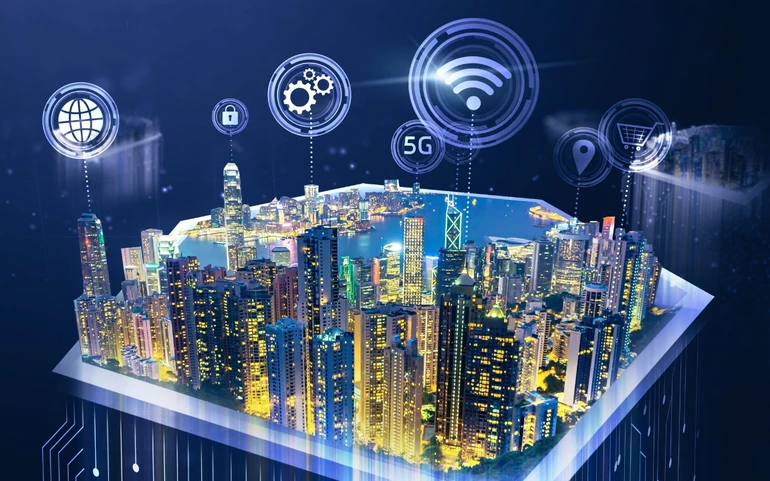The emergence of the Internet of Things (IoT) has transformed the way we interact with technology, from smart homes to connected cars. At the heart of this revolution is 5G technology, the fifth generation of mobile networking technology, which promises enhanced connectivity, speed, and capacity for IoT devices. This paper explores how 5G is powering the IoT revolution, its impact on various industries, and the challenges it faces in implementation.
1. understanding 5g technology

5G technology is a significant evolution of its predecessor, 4G LTE, with improvements in speed, latency, and connectivity; while 4G networks typically offer speeds of up to 100 Mbps, 5G can achieve speeds in excess of 10 Gbps under ideal conditions. More importantly, 5G introduces a new architecture designed to support a vast number of connected devices, making it a game changer for IoT applications.
1.1. 5G Key Features
High Speed: 5G networks enable up to 100 times faster download speeds than 4G, enabling real-time data transmission and improved user experience.
Low latency: 5G technology significantly reduces latency, with response times down to 1 millisecond. This is critical for applications that require instantaneous communication, such as remote surgery and autonomous vehicles.
Massive device connectivity: 5G can support up to 1 million connected devices per square kilometer, addressing the scalability needs of IoT networks.
2. the role of 5G in the IoT revolution

5G is expected to catalyze the IoT revolution by enhancing the capabilities of connected devices and enabling new applications across a variety of sectors. Here are some of the key areas where 5G is having a significant impact:
2.1. smart cities
5G technology will enable the development of smart cities by supporting vast networks of interconnected devices. Key applications include
Traffic management: 5G can facilitate real-time data exchange between vehicles, traffic signals, and infrastructure to optimize traffic flow and reduce congestion.
Public Safety: 5G smart surveillance systems can enhance public safety by providing real-time monitoring and analysis of urban environments.
Waste management: IoT sensors can monitor waste levels in garbage cans and optimize collection routes for a more efficient waste management process.
2.2. Healthcare
5G technology is revolutionizing healthcare by enabling advanced IoT applications:
Remote monitoring: 5G will enable healthcare providers to monitor patients’ vital signs in real time through wearable devices, improving patient outcomes and reducing hospital readmissions.
Telemedicine: High-speed connectivity facilitates virtual consultations and remote surgeries, making it easier for patients in remote locations to receive medical care.
Smart medical devices: connected devices transmit data instantly, enabling timely intervention and better management of chronic diseases.
2.3. Industrial IoT (IIoT)
In the manufacturing sector, 5G is enhancing the capabilities of IoT devices:
Smart Factories: Smart Factories: 5G enables real-time monitoring of machines and equipment, enabling predictive maintenance and minimizing downtime.
Supply Chain Optimization: IoT sensors track inventory levels and optimize logistics, improving supply chain efficiency.
Autonomous operations: 5G will support the use of autonomous robots and drones in manufacturing and logistics, increasing productivity and reducing operational costs.
2.4. transportation and logistics
5G will transform transportation systems through enhanced connectivity:
Connected Vehicles: Connected vehicles: 5G enables vehicles to communicate with each other and with infrastructure, improving safety and enabling features such as collision avoidance and automated driving.
Vehicle management: Real-time data transmission allows logistics companies to monitor vehicle performance, optimize routes, and improve delivery times. Smart parking: IoT sensors detect available parking spaces and guide drivers to them, reducing the time spent looking for a parking space.
3. challenges in implementing 5G for IoT

Despite the great potential of 5G to fuel the IoT revolution, several challenges must be addressed:
3.1. infrastructure development
Deployment of 5G will require significant investments in infrastructure, including the installation of new base stations and antennas. Many regions, especially rural areas, may struggle to achieve comprehensive 5G coverage.
3.2. security concerns
The proliferation of connected devices increases the risk of cyber attacks; ensuring the security of IoT devices and networks is paramount to protecting sensitive data and maintaining user trust.
3.3. Regulatory Challenges
Governments and regulatory agencies must establish clear guidelines for spectrum allocation and ensure compliance with security and privacy standards. Navigating the regulatory landscape can be complex and time-consuming.
3.4. Interoperability Issues
With the emergence of various IoT devices and platforms, ensuring interoperability between different systems is essential for seamless integration and data exchange.
4. the future of 5G and IoT
As the technology continues to evolve, the future of 5G and IoT holds exciting possibilities. Key trends to watch include
4.1. growing adoption of AI and machine learning
The integration of AI and machine learning into 5G networks will enhance the capabilities of IoT devices, enabling smarter decision making and automation.
4.2. expansion of edge computing
Edge computing, which processes data closer to the source, complements 5G by reducing latency and enabling real-time data analysis. This is especially important for applications such as autonomous vehicles and industrial automation.
4.3. Growth of Smart Home Technologies
As 5G becomes more widespread, the smart home market will expand, increasing connectivity and automation of household devices.
Conclusion.
5G technology is the driving force behind the IoT revolution, enabling faster, more reliable, and scalable connectivity for millions of devices. Its impact is felt across a variety of sectors, including smart cities, healthcare, industrial automation, and transportation. While infrastructure, security, and regulatory challenges remain, the potential benefits of 5G in enhancing IoT applications are immeasurable.
As 5G technology continues to evolve and expand, it will pave the way for innovative solutions that improve efficiency, safety, and quality of life. the synergy between 5G and IoT will shape the future of connectivity and transform the way we live and work in an increasingly interconnected world.










